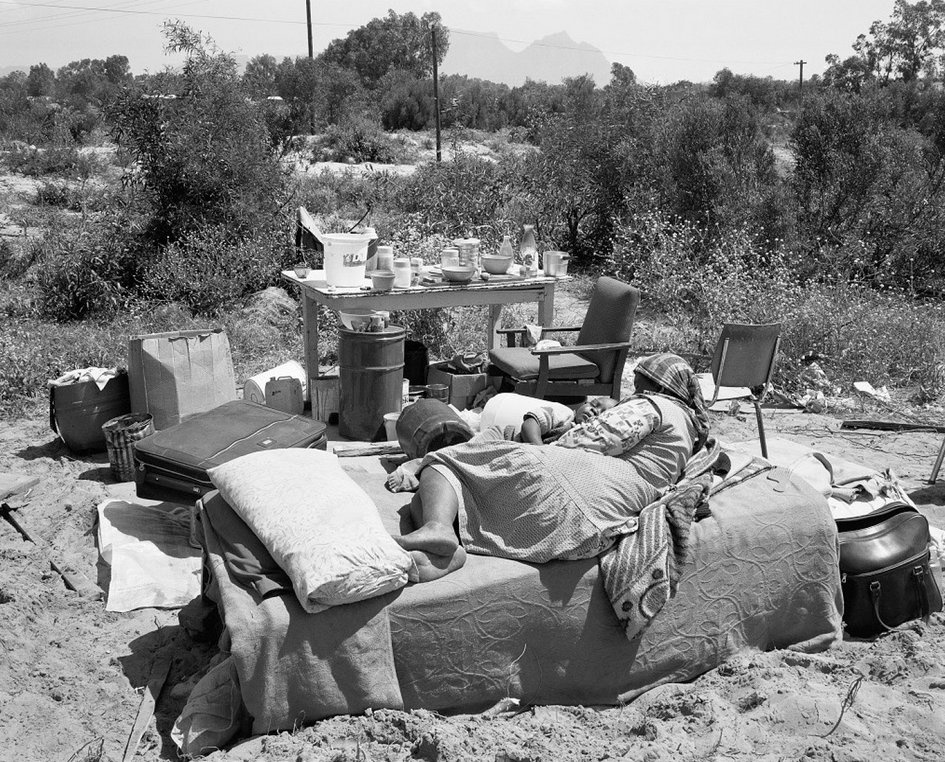David Goldblatt

This photograph was included in Goldblatt’s The Structure of Things Then (1998), a study of the nation’s values congealed, as he wrote, “in the particulars of innumerable structures and not a few ruins throughout our land.” That there is no structure in this photograph is itself an expression of these values. In an attempt to discourage black women from joining their men in the demarcated slums outside the city of Cape Town, the regional government tore down their makeshift houses. Black families were disallowed in the municipality, which gave preference to its coloured underclass. Time and again, black women and children were taken back to the rural ‘homelands’, and time and again they returned. The caption that accompanies Goldblatt’s photograph – Mother and child in their home after the destruction of its shelter – is curious in its subtleties. The mother and child are in their home yet it is without shelter, as if the walls and roof were momentarily rendered invisible, allowing the photographer a privileged view into the family’s single room.
b.1930, Randfontein; d.2018, Johannesburg
“I was drawn,” the late photographer David Goldblatt wrote, “not to the events of the time but to the quiet and commonplace where nothing ‘happened’ and yet all was contained and immanent.” A preeminent chronicler of South African life under apartheid and after, Goldblatt bore witness to how this life is written on the land, in its structures or their absence. Unconcerned with documenting significant historic moments, his photographs stand outside the events of the time and yet are eloquent of them. Through Goldblatt’s lens, the prosaic reveals a telling poignancy. Even in those images that appear benign, much is latent in them – histories and politics, desires and dread. His photographs are quietly critical reflections on the values and conditions that have shaped the country; those structures both ideological and tangible. Among his most notable photobooks are On the Mines (1973), Some Afrikaners Photographed (1975), In Boksburg (1982), The Structure of Things Then (1998), and Particulars (2003).